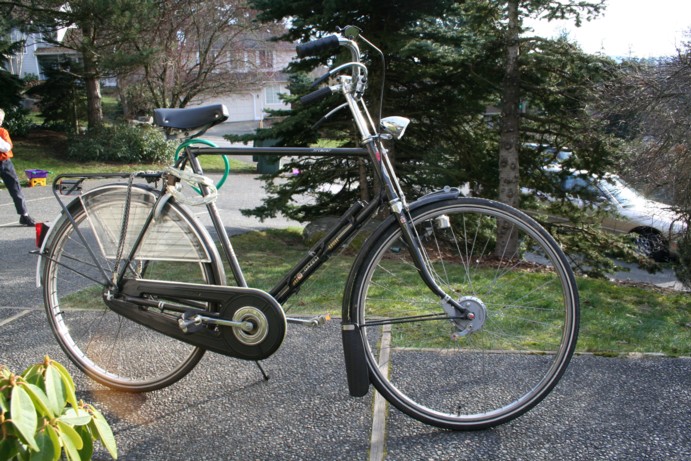
Dutch Bicycle
Many years ago, when I moved from the Netherlands to the United States, I moved my bicycle with the rest of the stuff. In retrospect, I wonder why, since riding a bicycle in the USA usually is a surefire way to get killed. But I digress.
Bicycles are used rather differently in the USA and the Netherlands. In the USA, a bicycle is used to get some exercise. In the Netherlands, a bicycle is used as a means of transportation. It gets you to work, school, the grocery store, etc.
As a result, a typical bicycle looks rather different in the USA and the Netherlands. A Dutch bike is rather heavy, since it has to be sturdy and able to withstand abuse. Anyway, here's a picture of mine.

As you can probably see, it's not exactly lightweight. Never understood why you must have a light bicycle for exercise, since that seems to defeat the purpose, but anyway.
The tires are quite a bit wider (and thicker) than on your average American bike. Also, they have a profile just like the tires on your car.
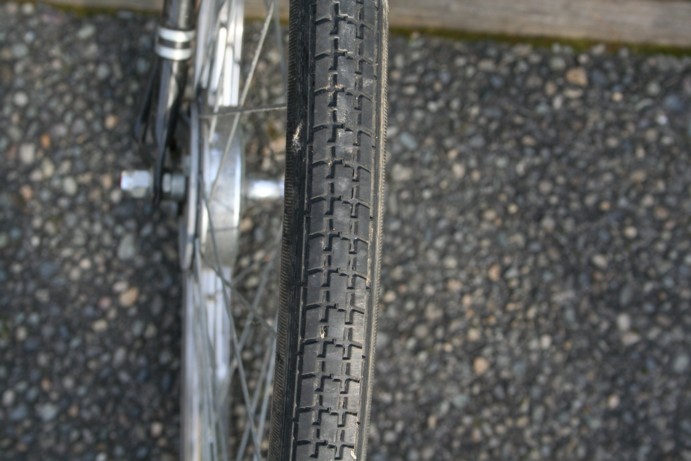
To improve traction in rainy weather. Just like on your car. We don't wear a helmet when riding a bicycle, you see, so we have to reduce the risk of falling off the thing.
Americans might frown on the helmet issue. Then again, some states in the USA don't require motorcycle riders to wear a helmet. I guess the reasoning is that if you are dumb enough to ride a motorcycle without a helmet, there's probably not much to protect anyway. Anyway, the Dutch feel that riding a motorcycle without a helmet is rather stupid, but wearing a helmet on a human powered bicycle makes you look ridiculous.
Note that the tires (and wheels) have a reflective stripe and/or coating. This is so that those stupid drivers can see you in the dark (from the side). This side reflection was made mandatory (by law) several years ago. We believe in government regulation when it comes to good ideas.
The same idea for relection, but then on the back of the bike, has been mandatory since the late 1970s. So, we have a red reflector on the back as well.
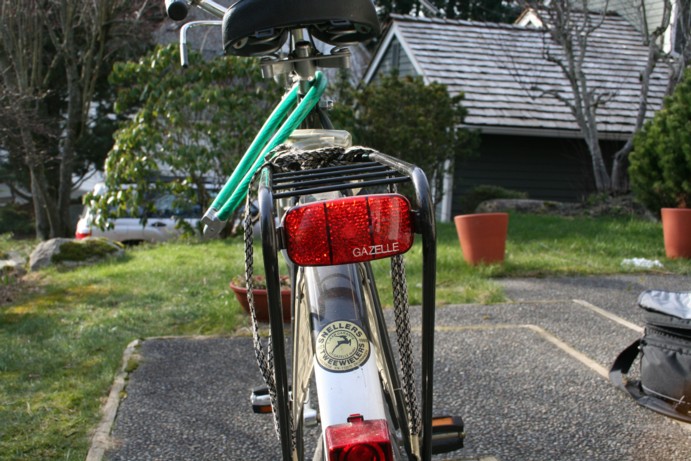
With all these reflection gizmos, you might wonder if Dutch bicycles have no lights. They do, as a matter of fact. Thing is, the lights are broken a lot of the time. By law, they have to be working when you are cycling in the dark, but the Dutch have a somewhat lackadaisical attitude when it comes to the law. Having a lot of rules does not necessarily mean that people follow them.
Talking about bicycle lighting: that's also kind of different. Whereas American bicycles usually have lights that run on batteries, a Dutch bike has a different solution (hey, we can't even be bothered to fix the lights, let alone change batteries).
A Dutch bike has something we call a 'dynamo'. It's basically a coil that rotates inside a bunch of magnets, utilizing the principles of electromagnetic induction to generate electricity. This will make the lights work. If they're not broken, that is. The rotation is accomplished by a small wheel that is pressed against the front tire. Only at night, of course, you disengage it during the day. Here's a picture.
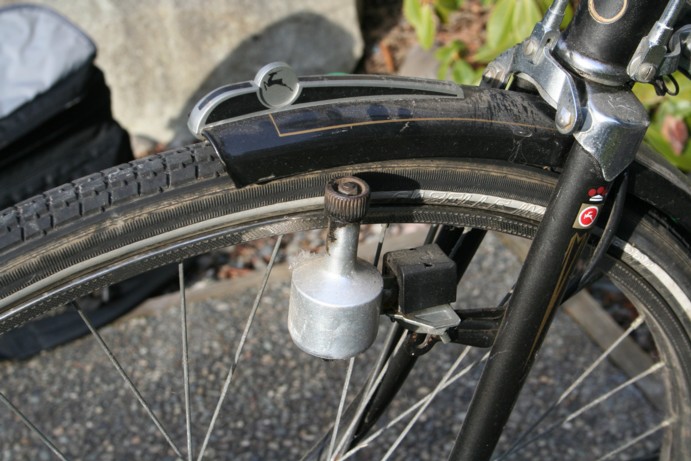
You can see the reflective stripe on the tire as well.
Speaking about electromagnetic induction, this was pioneered (among others) by a dude named Mike Faraday. He was so good at it that they named the physical unit of electrical capacitance after him: the 'Farad'. Which sounds like the German word 'Fahrrad'. Which means: bicycle. Eerie, huh?
This 'dynamo' principle has one big advantage: no changing batteries. It also has one huge disadvantage: it doesn't work when you are stopped (we do stop for a red light occasionally). But hey, we have reflectors on all sides of our bikes.
Moving along. Have a look at my rear wheel.
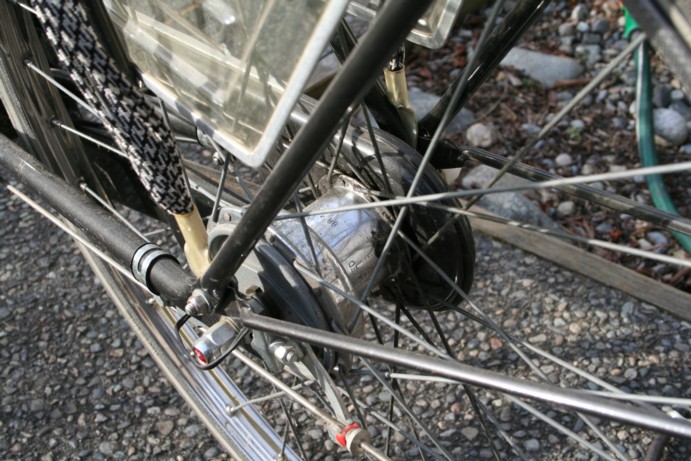
As you can see, the rear axle is rather thick. That is because it is actually a gearbox as well. My bicycle has three gears. That is actually more than enough, unless you live in a really mountainous area. No mountains in the Netherlands. Many Dutch bikes only have one gear. The country is flat.
You can see the cable that allows switching between the gears.
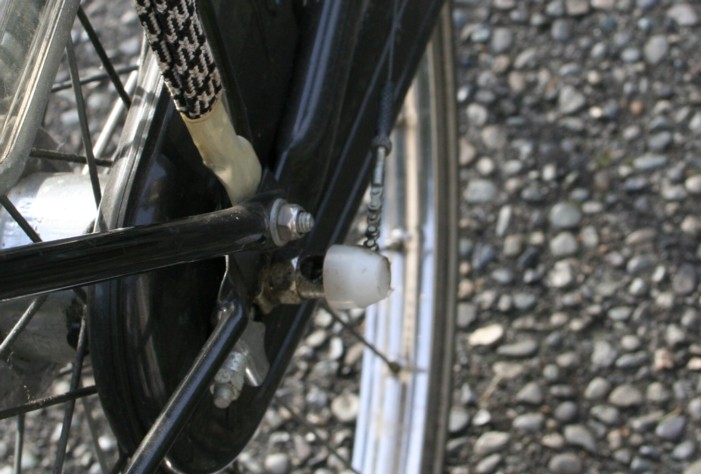
Here's the switch.
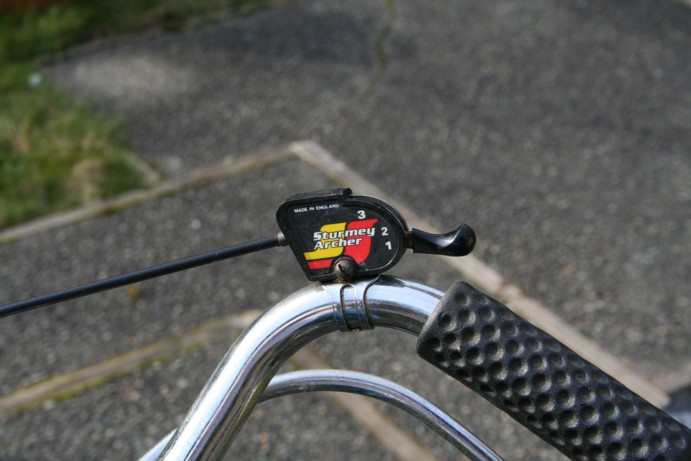
Which brings me to the brakes. Although we also have this primitive system where you brake by pressing rubber pads agains the wheel rims, my bike actually has drum brakes on both wheels. No maintenance required, and works much better, especially in the rain. I am particularly proud of the steel rods that actuate the brakes. No messing with cables that need to be adjusted and snap at the most inconvenient moment.
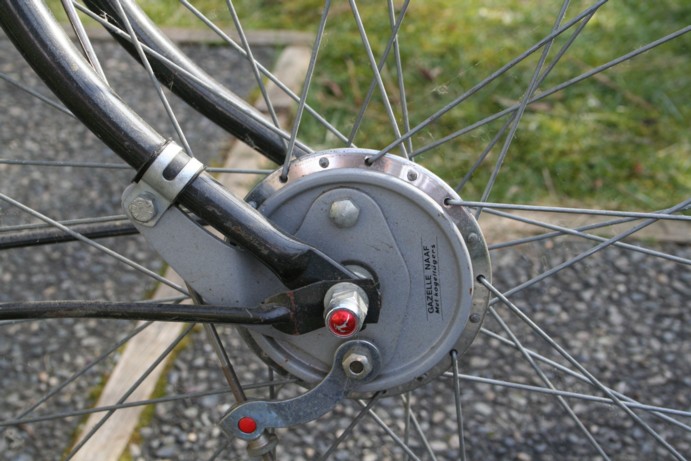
On to what we call the 'kettingkast' or literally translated, the 'chain case'. Protects the chain from dirt and mud and all that. One disadvantage is that it's a bit more work to replace the chain, or put it back on when it comes off. Oh, and the pedals have reflectors too, of course.
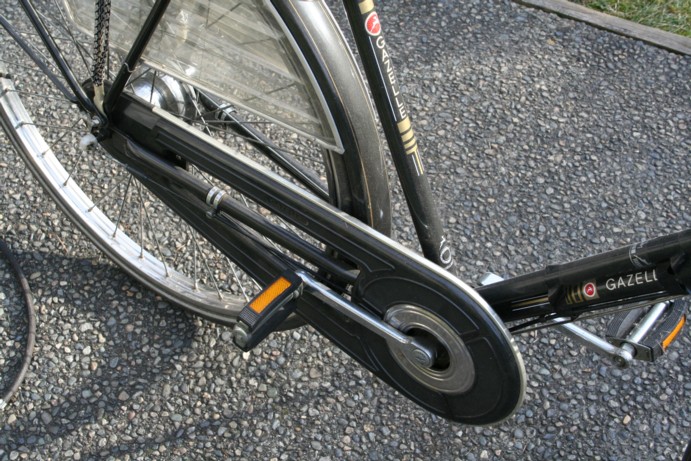
Next item of interest: the 'bagagedrager', or 'baggage carrier'. You can put a case of beer on there, or a bag of groceries, or whatever. The elastic bands are supposed to hold the stuff down. The 'bagagedrager' is also used to transport your girlfriend. Or boyfriend, but that is considered to be less than chivalrous. It's a lot of hard work when you have someone sitting on your 'bagagedrager'. Especially when cycling uphill.
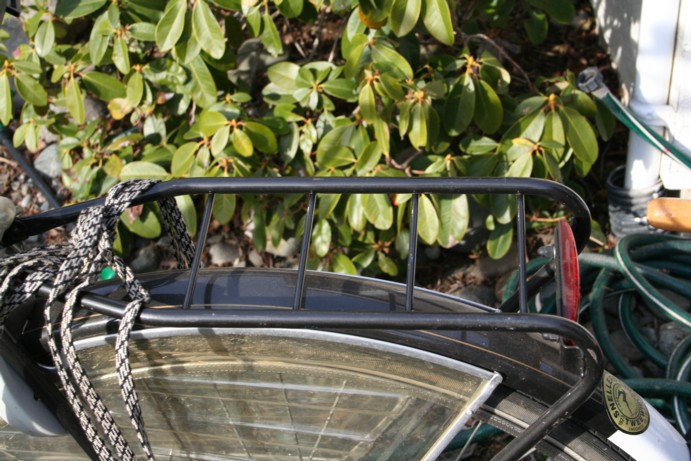
Finally, often special bags are mounted on the 'bagagedrager'. So you can move more groceries. Or you can put a small dog in each of them. I have seen it, and the dogs don't mind at all, they enjoy it.
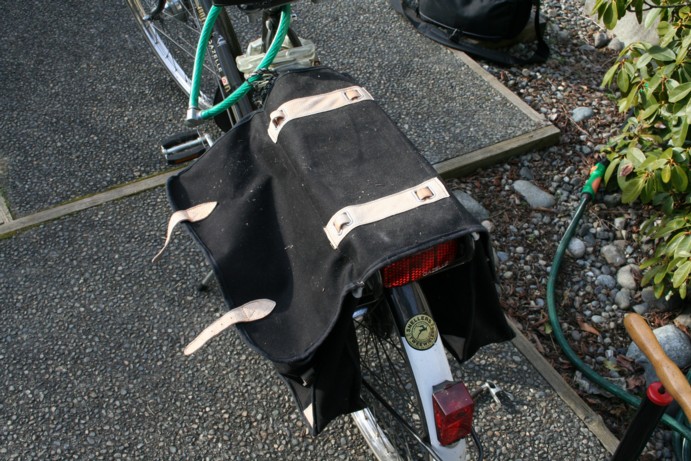
Please send comments to webmaster@oldeloohuis.com.